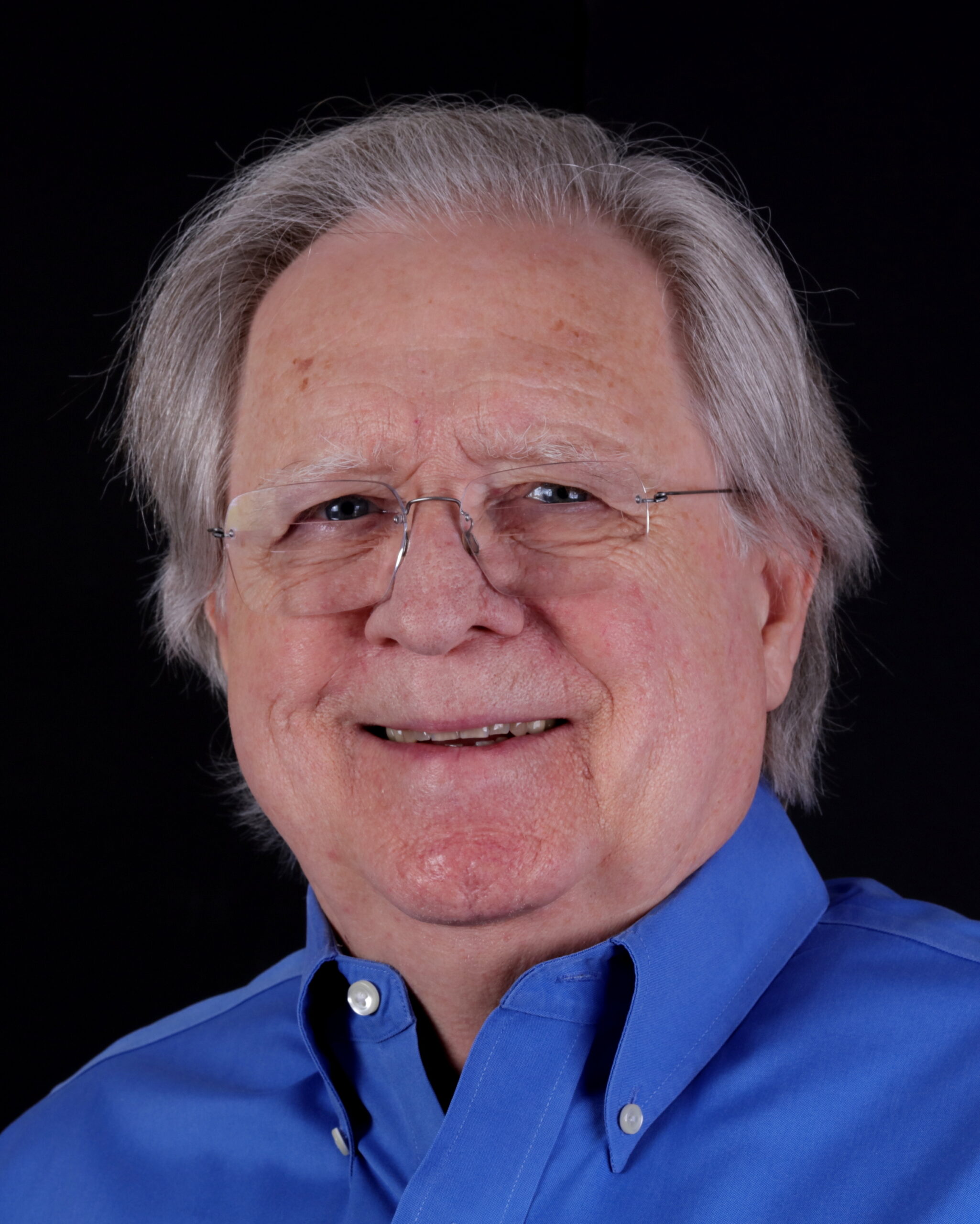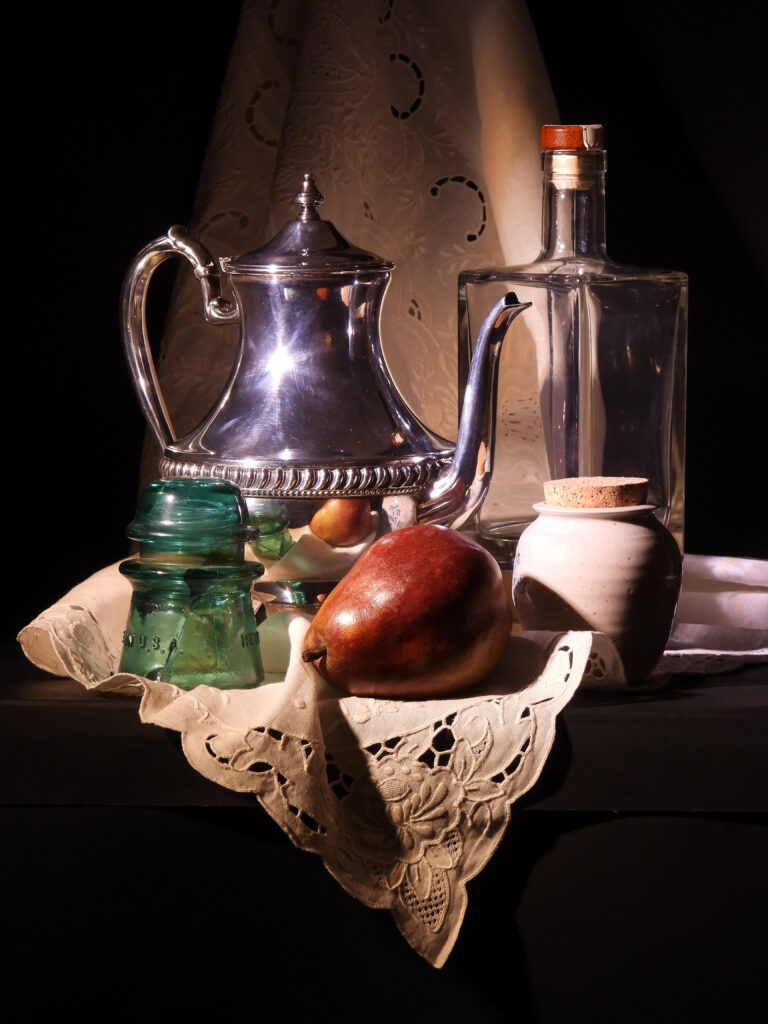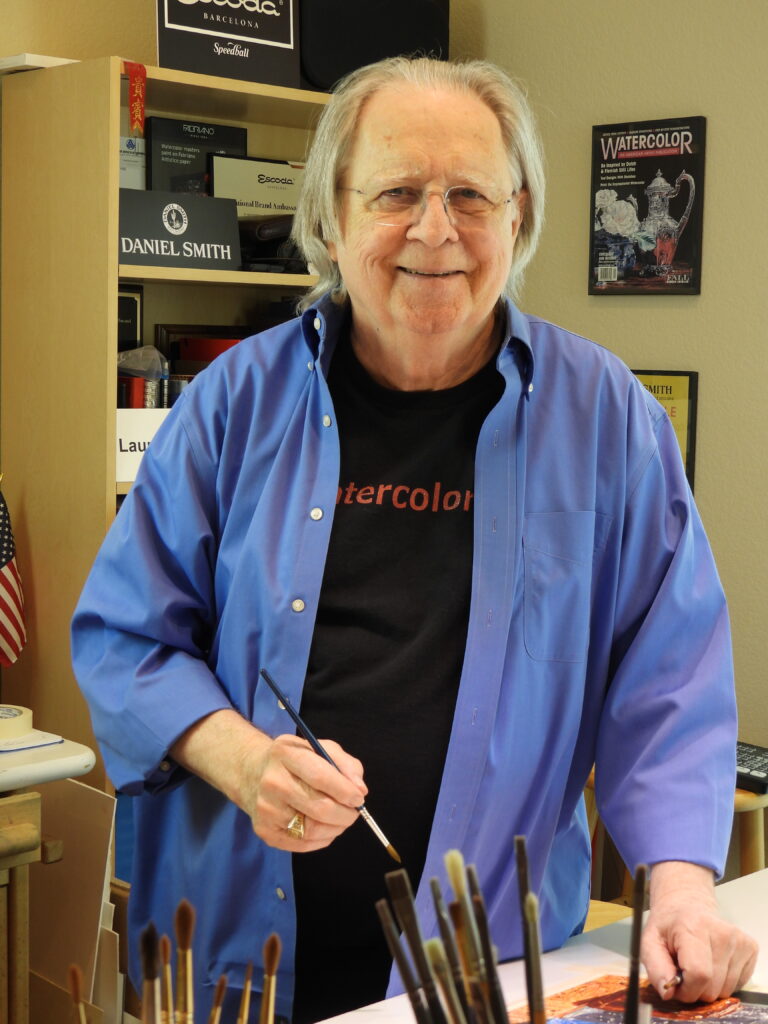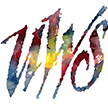Realism in Watercolor – Painting a Still Life
See his beautiful work at

Participants will learn about various techniques of painting realism. These techniques can apply to many types of subject matter. This a workshop for artists who are interested in learning to paint in the realistic style of the Dutch and Flemish still life painters of the 16th and 17th century. Participants will learn how to see, draw, and paint objects in a realistic manner. We will discuss the levels of painting in realism. The participants will be able to choose the degree of realism that they want to paint by participating in the painting of objects in a still life. These objects have been selected to give you a wide range of experience in painting metal, fabric, fruit, and other objects that are included in the still life setup.
Participants will paint a simple, quarter-sheet painting of a still life from a photo that will be provided. All participants will create the drawing at the same time using the design transfer method. Materials and tools for this will be provided. A drawing of the still life will be provided that the participants can trace onto the watercolor paper that is provided.

There will be a lot of discussion about the tools that can be used in creating realism. Participants will be provided with watercolor paper through the generosity of Fabriano Papers, so that the participants can experience what it is like to work on some of the highest quality watercolor paper available today.
Laurin will teach the British, Two-Brush technique of how to make things look round and three dimensional. This technique will be especially useful in painting folds in fabrics. You will also learn to create deep black backgrounds. We will explore a number of masking techniques and how to best apply them. We will work with tracing paper, masking fluid, and tape among other tools. These techniques can be applied to any watercolor process. Laurin’s primary goal of the workshop is to share with the participants the many varied techniques of painting in watercolor. The participants can take these techniques and apply them to their painting and augment what they already have in their tool kit.
The overall goal of participation in this workshop should be to learn a lot and enjoy the journey.
NONMEMBER: $400
MEMBER: $320
BOARD MEMBER: $280




I would like to renew my membership and pay for Laurin McCracken’s workshop.
There needs to be 2 separate transactions in order to generate your membership in our new system, then a separate email will be sent to you with the member registration link which will provide you the discounted member rate for the workshop. Register your membership here:
https://utahwatercolor.org/?product=uws-2025-2026-membership